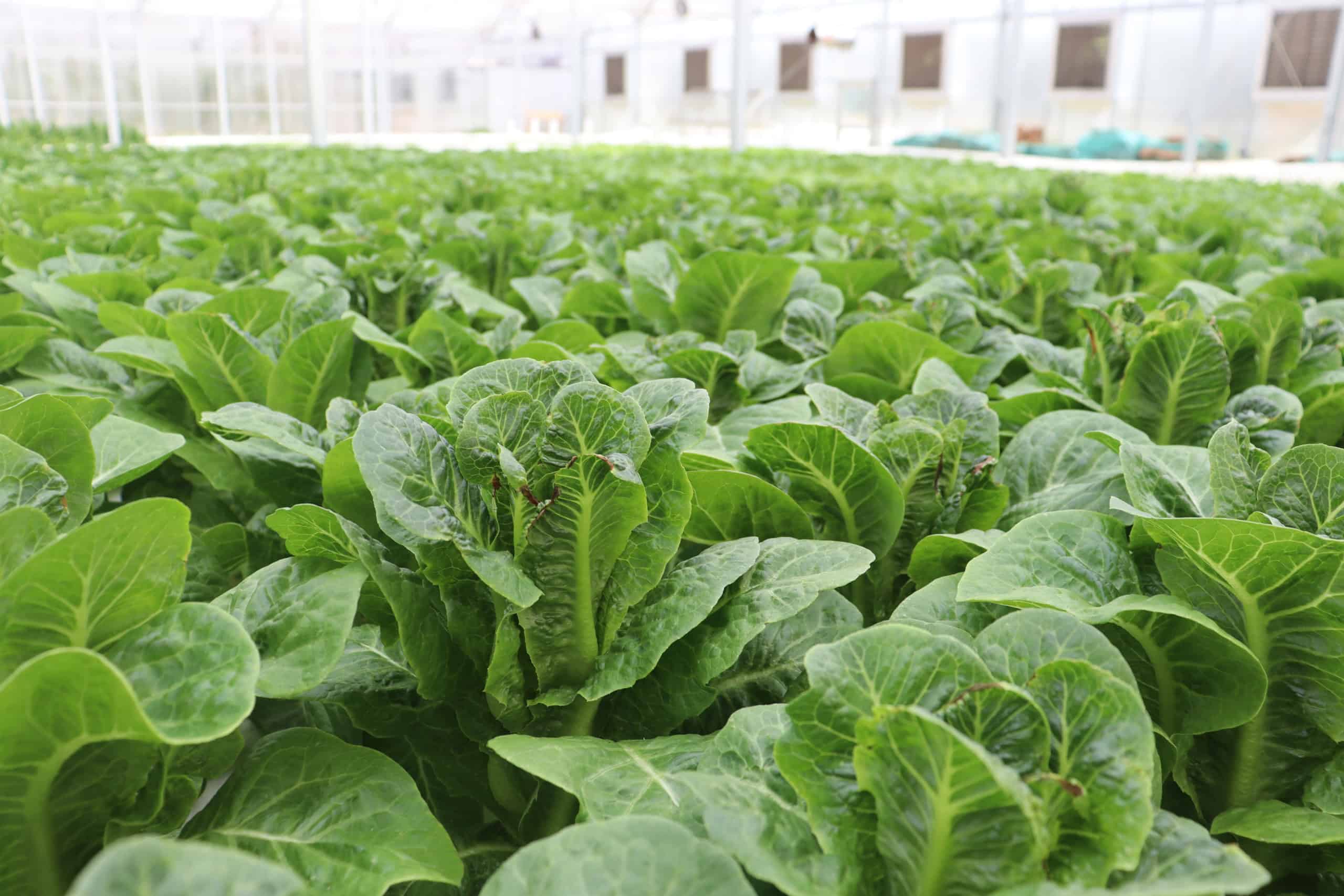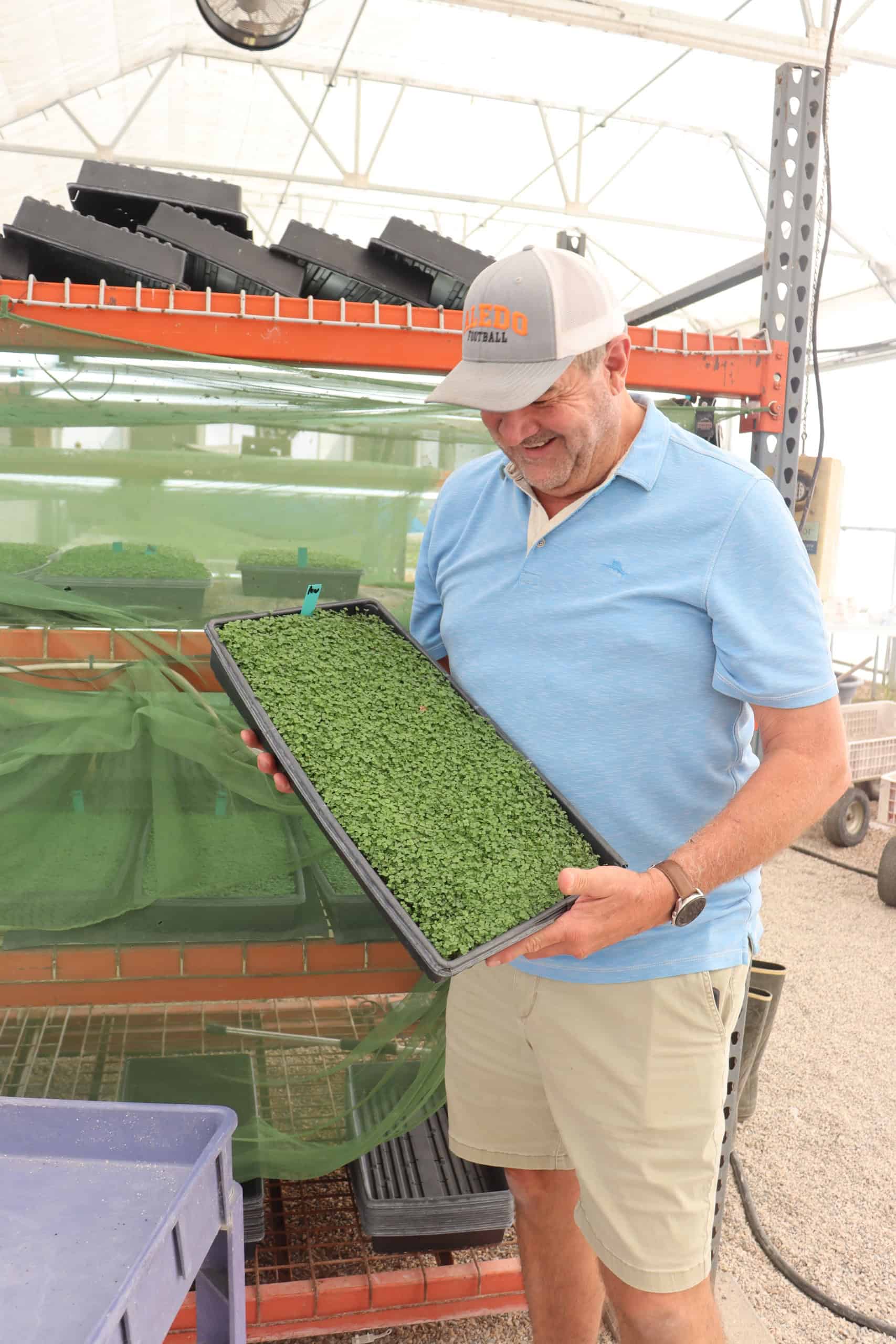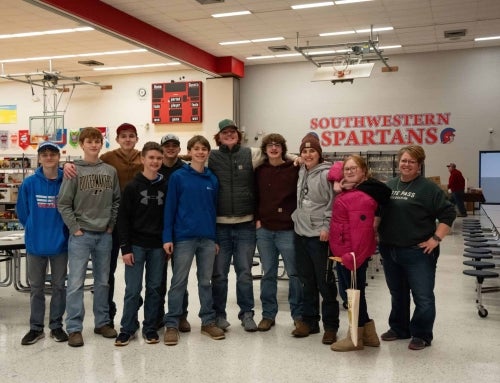
Some of the lettuce currently being grown at River Valley Farms.
Rows of lettuce span the interior of a climate-controlled greenhouse. Tomato and cucumber plants creep up trellises. Trays of microgreens bask in the glow of fluorescent lights.
Some will go to local families looking for produce grown close to home, and some will go to top restaurants in the Dallas/Fort Worth area.
Tucked down a backroad in the heart of North Texas, Aledo FFA Alum Rees Atkins produces tonnes of produce annually at River Valley Farms. But none of it sees soil – rather, it’s all grown via an extensive hydroponics system.
Atkins primarily makes his living via real estate, though he’s always maintained an interest in agriculture. When he first learned about hydroponic farming a few years ago, he was hooked.
“I didn’t even know the word back then,” Atkins says. “I saw a hydroponics example when I was taking the kids to Disneyland. These cucumbers were growing from windmills. I’m going, ‘How does it not break the vine?’ But I thought it was super cool.”
During his day job, Atkins happened upon a listing for a farm that had recently gone out of business, which he purchased and refurbished.

Atkins holds a tray of microgreens grown at his farm.
But the journey wasn’t without its struggles.
“I thought I knew a lot about agriculture, but hydroponics is ridiculously more complicated than growing in dirt,” Atkins says. “I really figured out what nutrients can do. You know, eliminating nitrates and adding potassium can all of a sudden spur blooms. I’d never known that you didn’t keep giving them the same nutrients the whole time.”
The farm was built with a focus on sustainability. All water gets reused throughout the growing cycle, and all nutrients are naturally sourced.
“All the nutrients these plants need come from our nutrient water,” Atkins says. “We have a well with well water. We add a little phosphoric acid, a little fish excrement, a little crushed up eggshells, some Epsom salt for magnesium; we end up with all the nutrients these things need to thrive.”
He’s also found a unique alternative for pest management within his facility.
“We let out predatory wasps that eat aphids,” Atkins says. “They literally land on the back of an aphid and lay an egg inside.”
Since his tenure in Aledo FFA, the town has seen drastic changes.
“I was in Mr. Bradford’s class,” Atkins says. “The agriculture science building at the high school is named after him now. Man, it was a little bitty school when I went there. It’s so different now.”
However, when looking at its FFA chapter today, he still finds hope for the future.
“When I grew up in Aledo, we’d spend our summers in trucks hauling hay, you know? It was a whole different environment back then,” he says. “We all had an interest in agriculture. So, I hope that some of today’s youth follow in our footsteps and create more places like this. Your generation has the chance to make a difference.”











